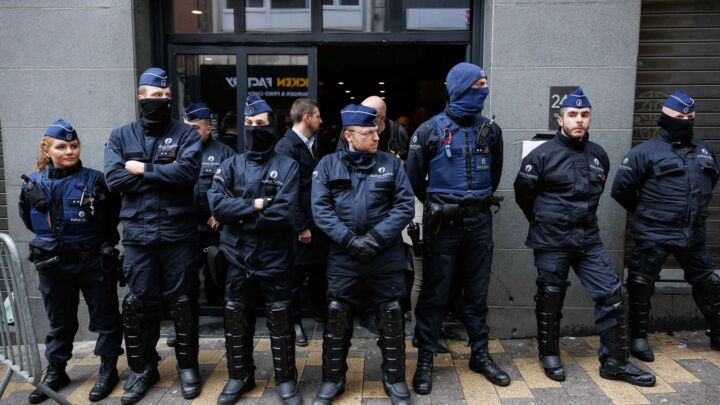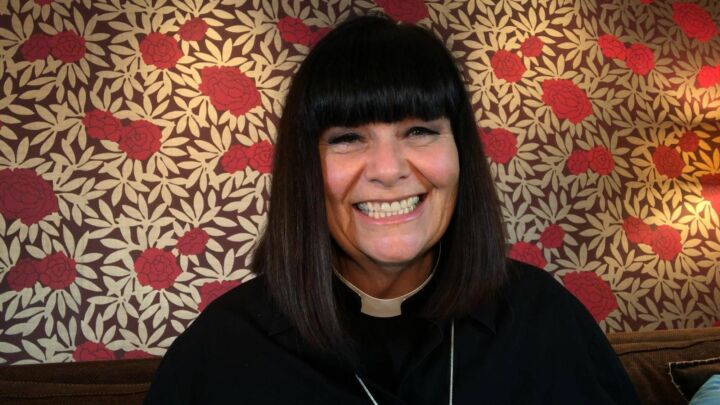Blanket coverage from Therapy News
In the wake of the London bombs, reporters gave us their feelings, not the facts.

Over the past decade, ‘Therapy News’, the concentration on the emotional aspects of news events, has altered news standards (1). Judging by the first 72 hours of UK press and TV news after the London bombings, this trend has gone further.
Soon after the bombings, Roger Mosey, head of BBC News, discussed his journalists’ coverage. Arguing that viewers had thought that the amount of coverage by the BBC was about right, he admitted that one brief sequence shown on News 24 ‘should have been edited out’ (2) – an image of a man being resuscitated in the immediate aftermath of the bombings, which he says was shown ‘by accident’ (3).
But what about a report by Fergal Keane shown on the BBC News website on 7 July? In this, the reporter offered comments on what he thought people felt, rather than what people said they felt. Keane talked of cars abandoned near the Number 30 bus in the ‘panic stricken aftermath’ – although it was unclear what this description was based on, since none of the eyewitnesses included in the report mentioned panic.
A focus on feelings can obstruct the process of gathering facts, which is supposed to be the basis for the reporter’s impressions and conclusions. As a result, news reporters sound as if they are merely passive eyewitnesses offering their impressions of events, rather than active agents who gather and scrutinise evidence to ensure they report the truth. In this case, an ITN report that the abandoned cars had been damaged could suggest another explanation for why their owners had left them (4).
There has also been a shift from journalism to voyeurism. Some news coverage of the Underground attacks dwelled on the images obtained from people’s mobile phone cameras. The day after the bombings the Daily Telegraph devoted its front page to a broadsheet-sized photograph, and inside were 10 pages of news coverage, half devoted to images. The Guardian offered one photo on its front page, and three news pages’ worth of images displayed over five pages.
It is not that such images should be censored, but are they useful? Shouldn’t images offer insight into what has happened? Perhaps the larger-than-normal display of images was designed to reflect the scale of the atrocity. But the same images – of the Number 30 bus and inside the tube tunnels – were being reprinted in newspapers several days afterwards, even though they offered little insightful in news terms.
A few television news reporters started to become part of the story, filming themselves going around hospitals with those looking for their loved ones. At one point an ITN news reporter turned to the viewers to say she was going to phone the hospital for one of the grieving relatives, effectively reporting a news story about herself (5).
Some news organisations tried to get involved in other ways. For example, the Daily Mirror included an article in the news pages by a Relate Family counsellor on ‘how to tell your children the news in a sensitive way that doesn’t terrorise them’ (6), as if parents couldn’t decide how to do that for themselves. Sky News had a ticker tape running at the bottom of the screen to help friends and relatives, nominating itself as a kind of alternative emergency service.
Therapy News has gone so far that news reporters are actually predicting what people will feel. Alastair Stewart, presenter of ITV’s London Tonight programme, claimed on the day after the bombings that ‘many of us will be nervous about travelling on the bus’ (7). Other reports told us what emotions to have, with the Sun’s front-page on 9 July reading: ‘pray for them all.’ (8)
This kind of reporting can also end up providing a safe version of the truth to protect people’s feelings. In the first few days, journalists did not use the word ‘dead’, and instead referred to people as ‘missing’, despite the fact that grieving relatives knew that loved ones who were missing were probably dead. One relative interviewed on Channel 4 News said: ‘if they’re not on the list, they’re dead.’ (9) A man was labelled ‘missing’ by reporters even though Yvonne Nash, his girlfriend, was interviewed saying he may be dead.
Perhaps it’s time to shift news values away from emotional centrism to free-up reporters to tell us something we don’t know.
Tessa Mayes is a London-based journalist, and author of the spiked-report ‘Restraint or Revelation? Free speech and privacy in a confessional culture.’ Email info@tessamayes.co.uk.
Read on:
spiked-issue: London bombs
(1) Submerging in ‘therapy news’, Tessa Mayes, British Journalism Review, vol 11, no 4, 2000
(2) Accuracy and honesty, Roger Mosey, Guardian, 13 July 2005
(3) BBC regrets showing bombing injured, Julia Day, Guardian, 12 July 2005
(4) ‘Bombs strike terror in London’, ITN News report, 7 July 2005
(5) Shiulie Ghosh reporting for ITV News, 8 July 2005
(6) ‘How to tell your children the news’, Daily Mirror, 8 July 2005
(7) London Tonight programme, ITV, 8 July 2005
(8) The Sun, 9 July 2005
(9) Channel 4 News, 8 July 2005
To enquire about republishing spiked’s content, a right to reply or to request a correction, please contact the managing editor, Viv Regan.







Comments
Want to join the conversation?
Only spiked supporters and patrons, who donate regularly to us, can comment on our articles.